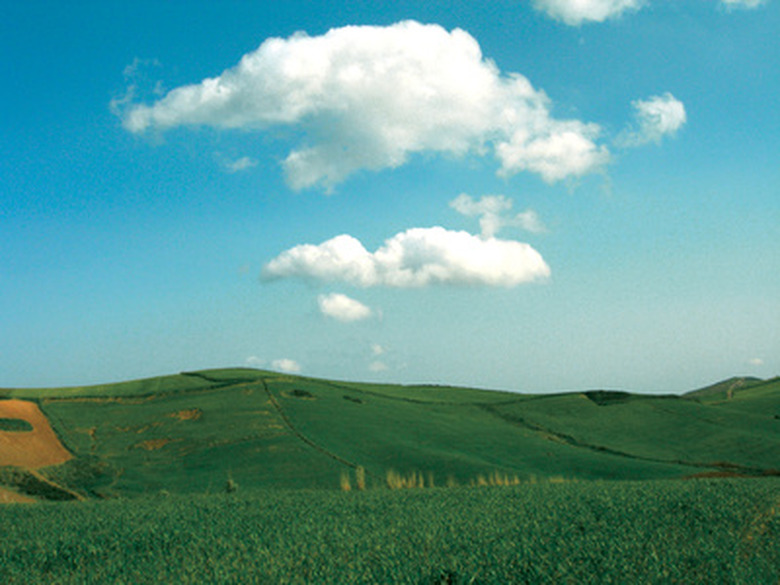What Are Some Endangered Animals In The Earth's Grassland Biome?
The Endangered Species Act of 1973 classifies an animal as endangered if it is on the verge of extinction in most of the places where it lives. Pursuant to this act, the U.S. Fish and Wildlife Service keeps a list of threatened and endangered land and freshwater species. Its list includes endangered species that live in the United States and foreign endangered species as well.
Prairie dogs
Prairie dogs
Prairie dogs live in the Great Plains of the United States and northern Mexico. Five species exist, and all five have declined as a result of human settlement on their range. But the U.S. Fish and Wildlife service currently classifies only Cynomys mexicanus, the Mexican prairie dog, as an endangered species. Cynomys parvidens, once considered endangered, has enjoyed a modest increase in numbers.
Black-footed ferret
Black-footed ferret
Mustela nigripes, the black-footed ferret, belongs to the weasel family. It likes to eat prairie dogs. For a while, no one knew whether this species had become extinct. It's still alive but endangered, according to the U.S., Fish and Wildlife Service.
Burrowing owl
Burrowing owl
While the range of the western burrowing owl extends to California, it also lives in prairie dog holes on the Great Plains grassland. The decline of prairie dog colonies has hurt the burrowing owl. Canada considers it an endangered animal, according to Nature Canada. The states of Iowa and Minnesota also list it as endangered, while other states classify it either as threatened or else as a species of special concern, according to Defenders of Wildlife.
American burying beetle
American burying beetle
When the American burying beetle finds a small dead animal, it will dig a hole and bury the corpse. This beetle used to be widespread from the eastern seacoast westward to the Great Plains, but has disappeared from a considerable portion of its former range. No one understands why it has declined. The U.S., Fish and Wildlife service now lists it as an endangered species.
Whooping crane
Whooping crane
The principal flock of whooping cranes spend the summer on the grasslands of Saskatchewan and winter in Texas. As the current millennium began, the flock numbered only 187 members, according to the U.S. Fish and Wildlife Service. Although captive breeding programs have proved successful, the whooping crane is still an endangered species.
Endangered Australian animals
Endangered Australian animals
Many marsupials of the Australian grasslands are in danger of extinction. A good example is a marsupial mouse called the sandhill dunnart, according to the Australian Government. Another example is the numbat, a banded anteater that lives on termites. The numbat has passed the critical stage and has become more numerous in recent years, according to Earth's Endangered Creatures.
Asiatic wild ass
Asiatic wild ass
Equus hemionus, the Asiatic wild ass, once enjoyed an extensive range in the grasslands of central Asia. Now it occurs only in a few areas such as southern Mongolia and northern China, according to IUCN Red List of Threatened Species.
Cite This Article
MLA
Zimmermann, Daniel. "What Are Some Endangered Animals In The Earth's Grassland Biome?" sciencing.com, https://www.sciencing.com/endangered-animals-earths-grassland-biome-6625728/. 22 November 2019.
APA
Zimmermann, Daniel. (2019, November 22). What Are Some Endangered Animals In The Earth's Grassland Biome?. sciencing.com. Retrieved from https://www.sciencing.com/endangered-animals-earths-grassland-biome-6625728/
Chicago
Zimmermann, Daniel. What Are Some Endangered Animals In The Earth's Grassland Biome? last modified March 24, 2022. https://www.sciencing.com/endangered-animals-earths-grassland-biome-6625728/
